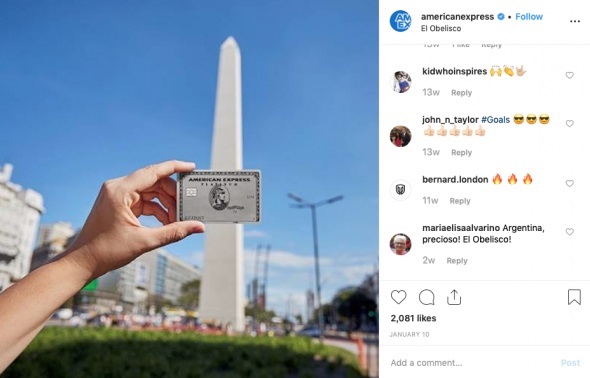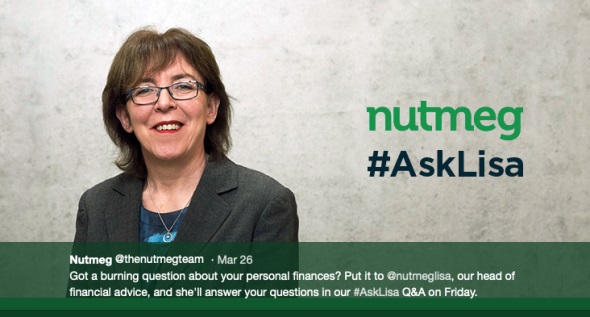How finance marketers use emotions to create strong connections with their audiences.
Money is often on our minds. Overdraft fees, confusing pension schemes and lack of transparency are just a few of the stressful things for customers when they’re dealing with their finances. In fact, 77% of Brits find are stressed about money, leading to high levels of anxiety or anger for many.
But for finance companies, what if having stressed and angry customers wasn’t a bad thing? What if firms could benefit from that anger, even harness it?
Take Transferwise, a company promising to save customers money when they transfer cash abroad. In 2016 the FinTech startup launched 5,600 balloons outside Westminster demanding UK banks to ‘pay back’ the £5.6bn they had charged in hidden fees the previous year. The stunt was bold and almost Brexit-bus level of angry. They even launched a website www.payusback.co.uk, which is still live.
Transferwise’s pointed accusation of UK banks worked a treat to attract new members. In 2017 the company grew 100% year on year, and currently has around 4 million customers transferring money around the world. Transferwise had unlocked a crucial, emotional response from their customers, which led to rapid growth.

The stunt demonstrated that emotion is the best strategy for marketing, but this had already been proven. In 2008 a study of 1400 campaigns found that emotional ads were by far the most successful when compared to more rational messaging. Brands like Nike who encourage customers to ‘just do it’ or KitKat, who reassure consumers to ‘have a break’ have been exploiting human emotions for years. But as Transferwise has shown, finance companies have also worked out how to press emotional buttons to great effect.
To understand the value of emotional marketing in the finance sector, we took a look at how some other finance brands use advertising to pull at customers’ heartstrings.
1. Comfort – PensionBee
It’s hard to get emotional about something as dry as your pension fund. But then again, who doesn’t want to live comfortably after retirement? If we think about it, pensions are a big deal, but knowing where all the contributions have gone can be tricky. PensionBee is a brand that offers to put pension finances in one easily accessible, digital platform.

What they do
The biggest issue for PensionBee is consumer trust. They won’t just hand money over to anyone, but only to those they truly believe will look after it.
PensionBee expertly tackles the trust issue from the word go. On their website, the first thing the browser sees are their number of customers, Trustpilot score and FSCS certification. Scroll down and you see a testimonial from a customer called Lynn who describes PensionBee’s ‘easy online plan’, designed to give ‘total peace of mind. The clean interface speaks tranquility, transparency and ease. It’s a tidy brand, like a digital Mary Poppins of pensions who promises to take care of everything.
Head to Twitter or LinkedIn and the theme continues, with a video of an retiree serenely walking his dog on the beach, living the ‘pension dream’. PensionBee’s content is highly practical, with handy guides answering questions like ‘what is compound interest?’ and ‘should I consolidate my pensions?’ The digital brand’s yellow hues and helpful content come across as a friendly and warm, free of the jargon or complications normally associated with pensions.
Why it’s effective
The reason why a light-touch, gentle and comforting tone works is because for a lot of us, pensions are scary and complicated. PensionBee have astutely spotted that their customers need hand-holding and reassurance, something they’ve delivered in the form of friendly videos, 101 guides and plenty of testimonials from current customers saying ‘don’t worry, they take care of it’. The effect is the feeling of relief and comfort on the part of the customer. Phew, finally someone will sort out the pension mess.
2. Joy – American Express
If someone mentions joy, your mind might jump to domestic goddess Marie Kondo asking some poor creature whether their green jumper really sparks joy in their life. But jumpers aside, bank and credit card company American Express are masters of using joyful imagery to position themselves as the most aspirational finance brand around.

What they do
For American Express, it’s all about using pictures and videos to show that life’s simply better when you spend with them. Funnily enough, they don’t focus much about themselves and their services, it’s more about life itself, the daily ups and downs, and how they can make it easier for their customers.
Their most popular Youtube video, for instance, is nothing to do with credit cards but a minute-long guide on how to remove wrinkles from clothes without using an iron by TV host Kari Byron. It’s a surprisingly bright, enjoyable video which makes a point of going to bizarre lengths to avoid ironing (spoiler alert: it involves ice cubes). The tagline ‘how can we make your everyday a little easier?’ is much more friendly neighbour than financial giant, making customers feel like they’ve bumped into an old friend.
Amex’s Instagram is slightly different – this time you actually see their cards being held up to the centre of the image. But look closely, and you’ll see they’ve been very clever. By centuring the card against a background of an Italian beach, a landmark or a fancy bar, Amex have made their credit card seem like a little life companion, a bit like when travellers take photos of their favourite momentos in front of Machu Picchu. It’s a smart move, you might feel like you’re looking at a personal Instagram of someone living a fun-filled, joyful life that just so happens to feature a credit card.
Why it’s effective
It’s hard not to scroll along American Express’ social feed and not feel a warm fuzzy feeling. The vibrant, colourful compilations of images give customers a sense of ‘yes, this is what life could be like’. It works because onlookers forget that American Express are even a financial brand. American Express doesn’t mention the finer details of their credit cards such as spending limits, but focus instead on life, happiness and joy. This leaves you wanting a piece of their magic – and with 344k Instagram followers, it seems to have worked.
3. Confidence – Nutmeg
Given the growing concern over financial scandals such as the collapse of London Capital and Finance, wealth management brands today need to work extra hard to fill consumers with confidence. Digital wealth management company Nutmeg is one of those brands promising to give the best advice on how to grow your money. But why should investors trust an app with their capital?

What they do
The challenge for Nutmeg is that traditionally, wealth management advice is given in person by someone suitably experienced, reassuringly formal and on hand to answer any questions you have. Nutmeg claims to make wealth management open to everyone by turning it digital, but they have also cunningly used their investment experts in marketing campaigns to appear more credible.
You might expect a financial brand to show off their expertise through its people, but Nutmeg goes one step further. With Head of Advice Lisa Caplan, Nutmeg have hired a real-life person solely dedicated to talking to people on social media about personal finances. Lisa comes across a wise veteran of the finance world, certainly the sort of person you’d want to hear from about investing properly.
In fact, Nutmeg have filled their Facebook and Twitter thread with short, smart piece-to- camera videos from experts with impressive titles such as their CIO (Chief Investment Officer) Shaun Port and Director of Investment Strategy Brad Holland. They discuss anything from Brexit to so-called Nutmegonomics, featuring clever people in front of dual-monitor screens with graphs that only investment gurus can decypher.

Why it’s effective
The point is that Nutmeg have proved with their people-led marketing that they are experts in what they do, with buckets of experience to back that up. Watching Shaun, Brad or Lisa for a few minutes might not turn their audience into finance experts, but it does reassure them that if anyone knows where to invest, it’s the Nutmeg team. The fact that these are real people with real experience gives customers confidence that the Nutmeg pros can be trusted with important financial decisions. And with over 50k customers, maintaining that confidence is vital.
Companies, especially financial ones are constantly urging customers to save or spend, to invest or transfer, to manage their money in increasingly smarter ways.
They are under constant pressure to convince customers to do things with their hard earned finances, and it takes the monumental efforts of countless marketing teams to make that happen. Finance on the face of it is a cold, faceless entity which simply gets us from A to B. But it’s an incredibly emotional thing, because consumers can be stubbornly protective of their money and they spend it.
That’s why emotional marketing campaigns are so important to connect with audiences, acknowledge their money worries and promise that it’ll all be alright in the end.
Share
Subscribe




